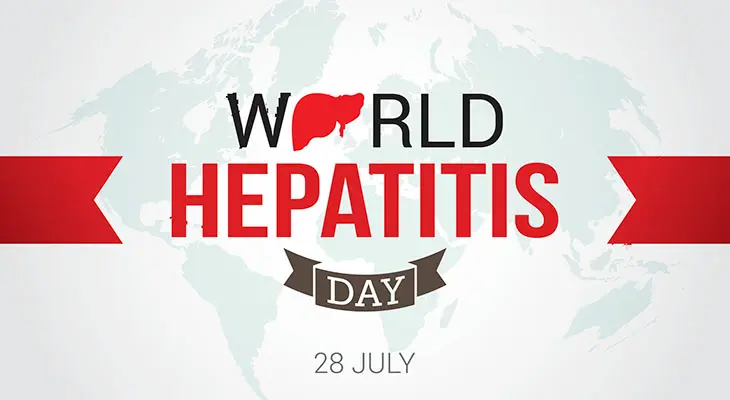Every year on July 28, World Hepatitis Day is observed to raise awareness of the potentially fatal disease Hepatitis. The day is observed to raise awareness about early detection of infection and prevention methods. The disease is associated with a number of infections, including hepatitis A, B, C, D, and E. Hepatitis is a liver-related disease that causes liver inflammation.
Inflammation is defined as the swelling of tissues in the bodies of people who have been injured or infected. The liver, as the largest organ in the human body, is primarily responsible for channeling blood from the stomach to the rest of the body.
The World Health Organization (WHO) has designated this day to highlight the importance of providing hepatitis care in primary health care facilities and communities for better treatment and care. The goal of the day is to eradicate hepatitis by 2030. WHO has asked countries to meet the following targets in order to completely eradicate hepatitis:
- Decreasing the infections by 90 percent for infections like hepatitis B and C.
- Reducing hepatitis-related death from liver cirrhosis and cancer by 65 percent.
- Early diagnosis of hepatitis B and C viruses.
- Appropriate treatment for 80 percent of the patients.
HISTORY
This day began in 1967, when an American physician named Baruch Samuel Blumberg discovered the Hepatitis B virus. As a result, World Hepatitis Day was established on July 28 to honor the Nobel Prize winner.
The day was formed later in 2007 and began to be observed as World Hepatitis Day in 2008 by the first community.
SIGNIFICANCE
The day plays a significant role in improving the chances of curing the disease and stopping its further transmission. Awareness is required for people to get vaccinated against hepatitis B.
SYMPTOMS
-
- Loss of appetite
- Yellow discolouration of skin and eyes(Jaundice)
- Pale stools
- Dim pee
- Stomach pain
- Joint pain
- Fatigue
- Abrupt weight reduction
- Nausea
- Fever
- Fatigue
- Nausea
- Abdominal pain
- Dark urine







 Finance
Finance







